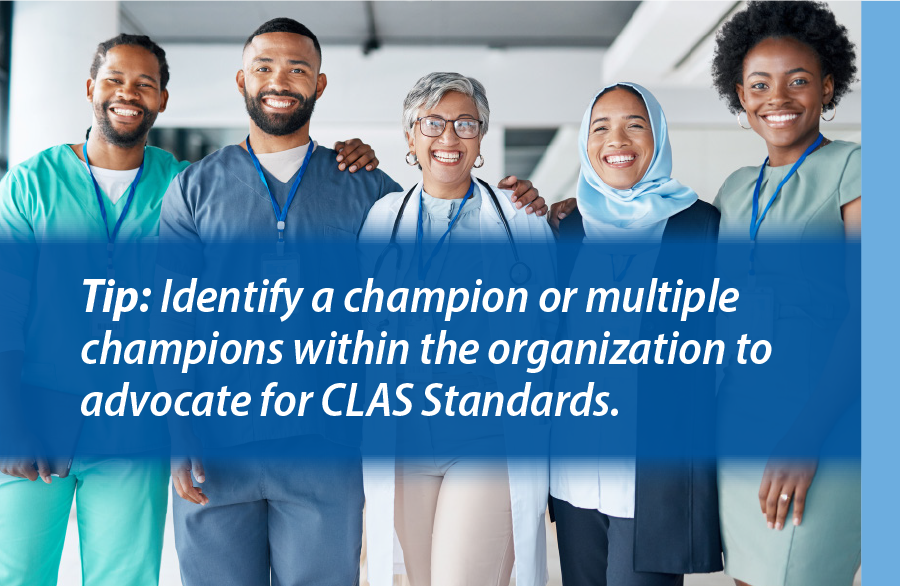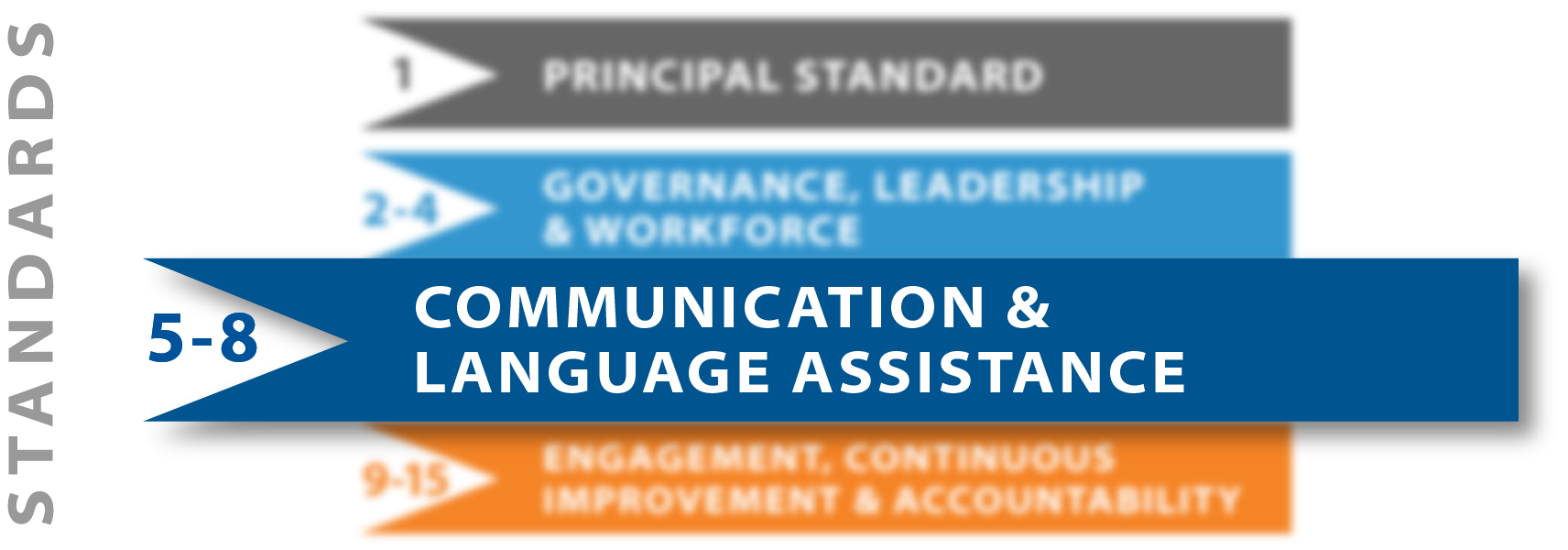More than two decades ago, the U.S. Department of Health and Human Services (HHS) released national standards for culturally and linguistically appropriate services in health and health care (CLAS Standards). Since that time, countless numbers of health care providers and health care facility staff members have focused their quality improvement (QI) efforts on meeting those standards, aiming to ensure that the people they serve get equitable, high-quality care.
Improving communication, enhancing understanding

Rankin County Hospital District, a 15-bed, critical access hospital in Rankin, Texas, is among those change makers. Chief Nurse Tiana Wells teamed up with her infection prevention nurse at the time to evaluate how providers and staff members used the hospital’s interpretation and translation services, a key focus of National CLAS Standards 5 through 8 (see box below).
Among the guiding questions: Did Rankin County Hospital District personnel provide adequate support to a growing number of Spanish-speaking residents in their small city?

The evaluation revealed that many hospital staff members “did not consistently use interpretation and translation services available to them,” said Wells. As a result, providers often asked their bilingual colleagues and patients’ family members to assist with language interpretation; others used unsanctioned tools like Google Translate to prepare materials for patients with limited-English proficiency (LEP).
This patchwork of language supports made it difficult for Wells and her team to determine, accurately, if patients with LEP really understood the information provided to them.
Knowledge building
Rankin County Hospital District staff began by a conducting a program assessment, using a four-factor analysis, described in the Guide To Developing a Language Access Plan, from the Centers for Medicare & Medicaid Services (CMS). This analysis, along with exploratory discussions with staff, revealed that if health care providers and staff had a streamlined process to follow, they would be more likely to use the hospital’s established interpretation services vendor. The QI team then conducted an education campaign to ensure hospital staff knew which interpretation and translation service to use and what process to follow when submitting documents for translation.
In October 2023, the radiology department became the first to follow the process and arranged to get their patient medical forms translated into Spanish and other languages. Other clinical and non-clinical departments submitted documents for translation throughout the year, Wells explained.
In addition to these practical steps, Rankin County Hospital District staff members participated in the three-part webinar series, “Implementing National CLAS Standards,” hosted by the TMF Quality Innovation Network and ATW Health Solutions. “The webinar series reminded us to think about our patients’ backgrounds and determine how we can offer care and services that meets their cultural and language needs,” Wells stated.
A TMF Quality Innovation Network QI specialist participated in monthly virtual meetings with the QI team and other staff to further identify key issues and barriers. During these meetings, hospital staff asked “meaningful questions and challenged the status quo.” Wells added that perhaps the biggest achievement was in helping hospital staff better appreciate how implementing the CLAS Standards could enhance patient care.
Future focused
Success in making positive change is a natural motivator. Rankin County Hospital District staff intend to continue improving processes, breaking free from the “this is how we’ve always done it” mindset.
Next on the change agenda: to address health care disparities by collecting Race, Ethnicity and Language (REaL) data from their patient populations, said Wells. In particular, the Rankin County Hospital District QI team will review data from the electronic health records of their patients with diabetes. The intent is to see if Hispanic patients’ A1c levels are in the same range as those of white, non-Hispanic patients. What story the data tells will give Wells and her team information they can use to “identify potential disparities related to social determinants of health” and create a strategy for addressing them.
Providing communication and language assistance

Good communication is essential for improving access to health care that respects every patient's linguistic and cultural needs. Implementing National CLAS Standards 5-8 can help health care providers strengthen the goal to eliminate language barriers, ensuring that all patients have a positive health care experience, ultimately leading to better health.
Action steps for standards 5-8
5
Offer language assistance and other communication support, at no cost, to people with limited English proficiency (LEP) so they have access to all health care and services.
6
Ensure that providers and staff know that verbal and written language assistance, in patients’ preferred language, is available.
7
Hire professional translators and interpreters to provide language assistance. Do not rely on untrained individuals or family members to provide language assistance.
8
Provide easy-to-understand print and multimedia materials and signage in the languages commonly used by the populations you serve.